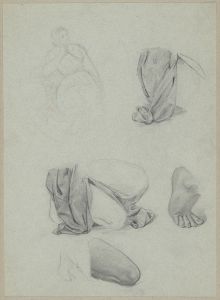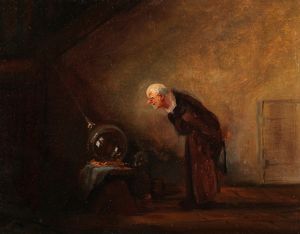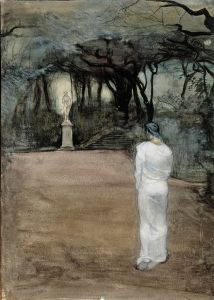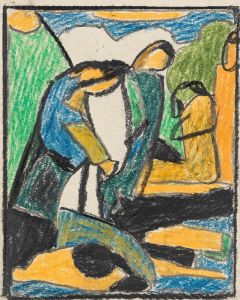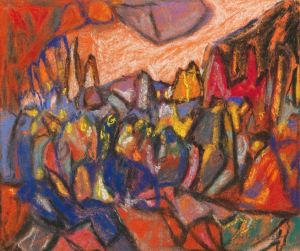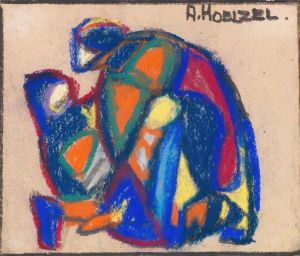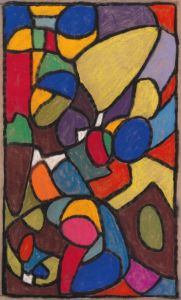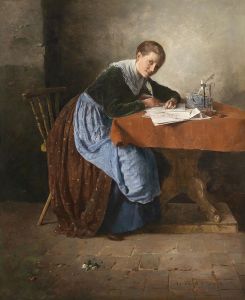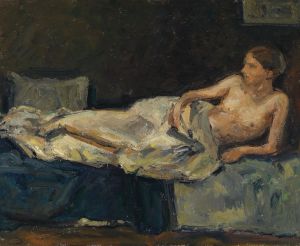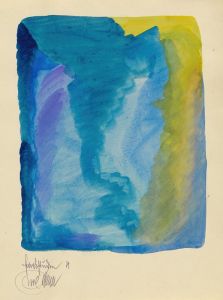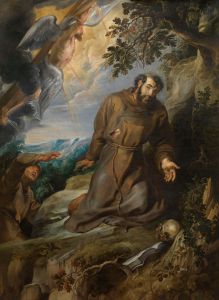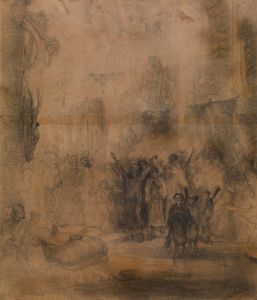
Anbetung
A hand-painted replica of Adolf Hölzel’s masterpiece Anbetung, meticulously crafted by professional artists to capture the true essence of the original. Each piece is created with museum-quality canvas and rare mineral pigments, carefully painted by experienced artists with delicate brushstrokes and rich, layered colors to perfectly recreate the texture of the original artwork. Unlike machine-printed reproductions, this hand-painted version brings the painting to life, infused with the artist’s emotions and skill in every stroke. Whether for personal collection or home decoration, it instantly elevates the artistic atmosphere of any space.
Adolf Hölzel's painting Anbetung (translated as Adoration) is a work by the German painter and art theorist Adolf Hölzel, who was a significant figure in the development of modern art in Germany during the late 19th and early 20th centuries. Hölzel is widely recognized for his contributions to abstraction and his innovative approach to color and composition, which influenced many artists and movements.
Anbetung is one of Hölzel's notable works that reflects his transition from representational art to abstraction. The painting is characterized by its use of vibrant colors, dynamic forms, and a sense of spiritual or symbolic depth. Hölzel often drew inspiration from religious themes, and Anbetung likely represents an act of devotion or worship, though the exact subject matter is interpreted through his abstract style rather than traditional figurative representation.
Hölzel was a pioneer in exploring the expressive potential of color and form, and his work often emphasized harmony and rhythm over realistic depiction. This approach is evident in Anbetung, where the composition appears to prioritize emotional resonance and spiritual meaning. The painting demonstrates Hölzel's interest in the interplay between abstraction and spirituality, a theme that was central to much of his artistic philosophy.
Adolf Hölzel was also a prominent teacher and theorist, and his ideas about art had a lasting impact on his students, including notable figures such as Oskar Schlemmer and Johannes Itten, who later became key members of the Bauhaus movement. Hölzel's emphasis on the autonomy of color and form can be seen as a precursor to many modernist developments in 20th-century art.
While specific details about the creation date or current location of Anbetung are not widely documented, the painting is representative of Hölzel's mature style, which emerged during his time as a professor at the Stuttgart Academy of Fine Arts. His work during this period often explored the boundaries between figuration and abstraction, making Anbetung an important example of his artistic evolution.
Adolf Hölzel's contributions to art history, including works like Anbetung, continue to be studied for their innovative approach to composition and their role in the broader context of modern art.





